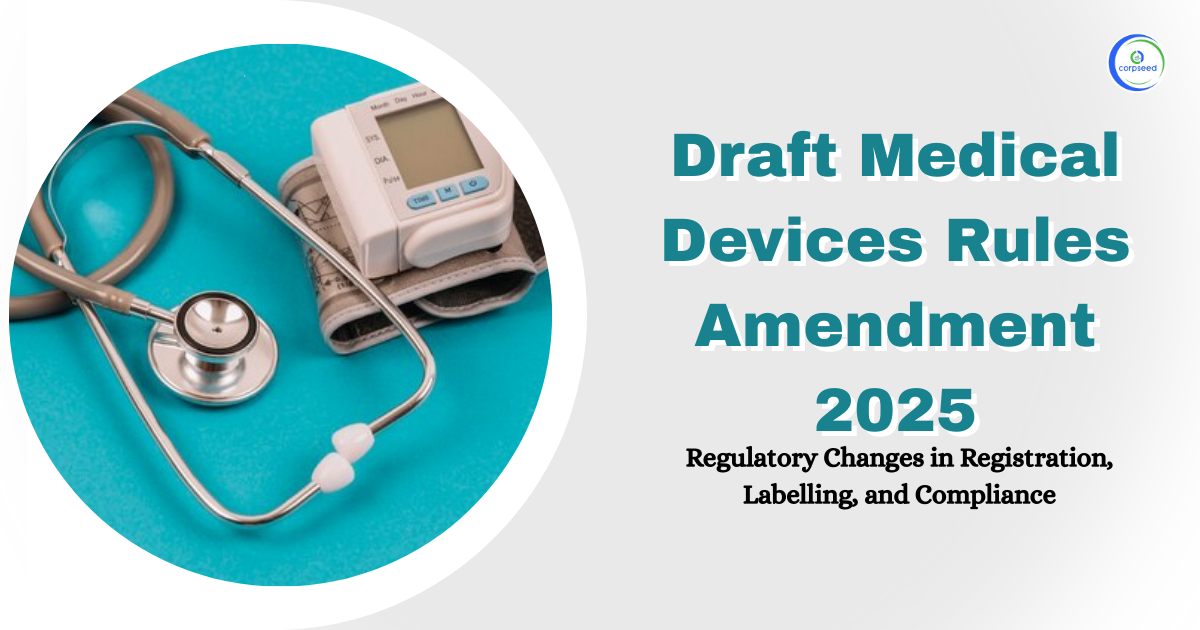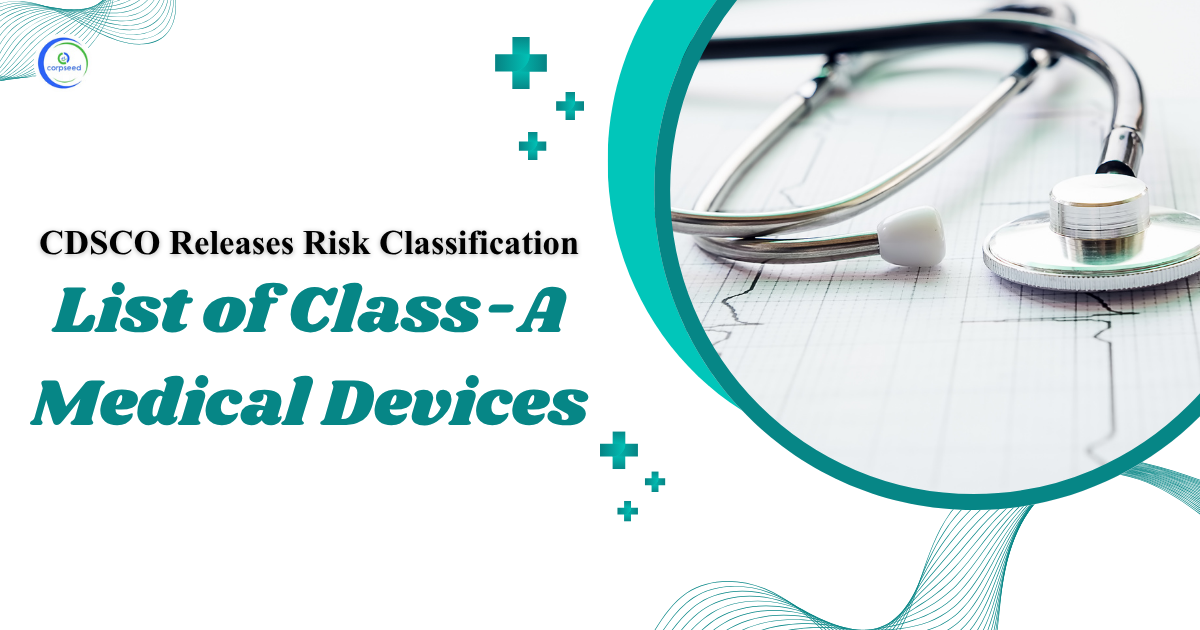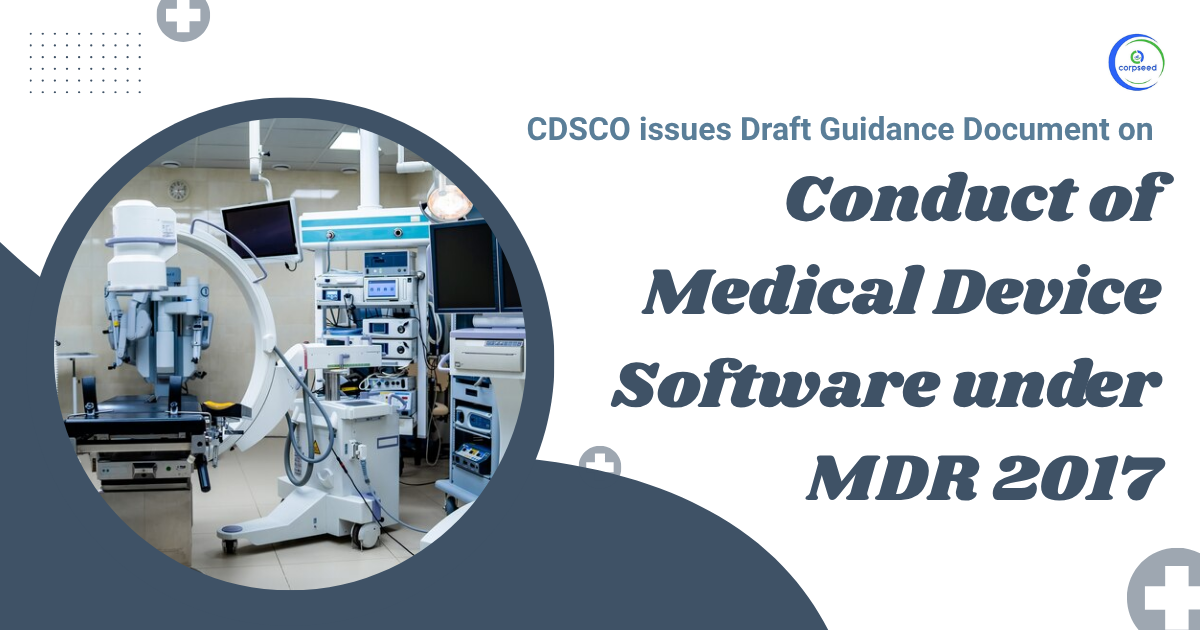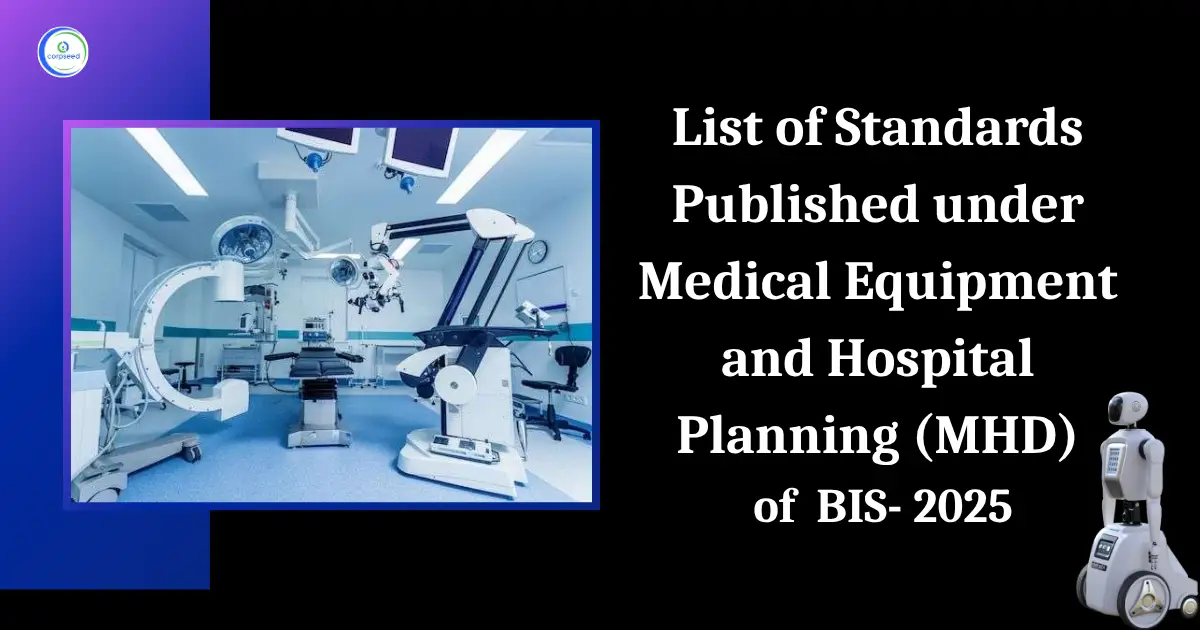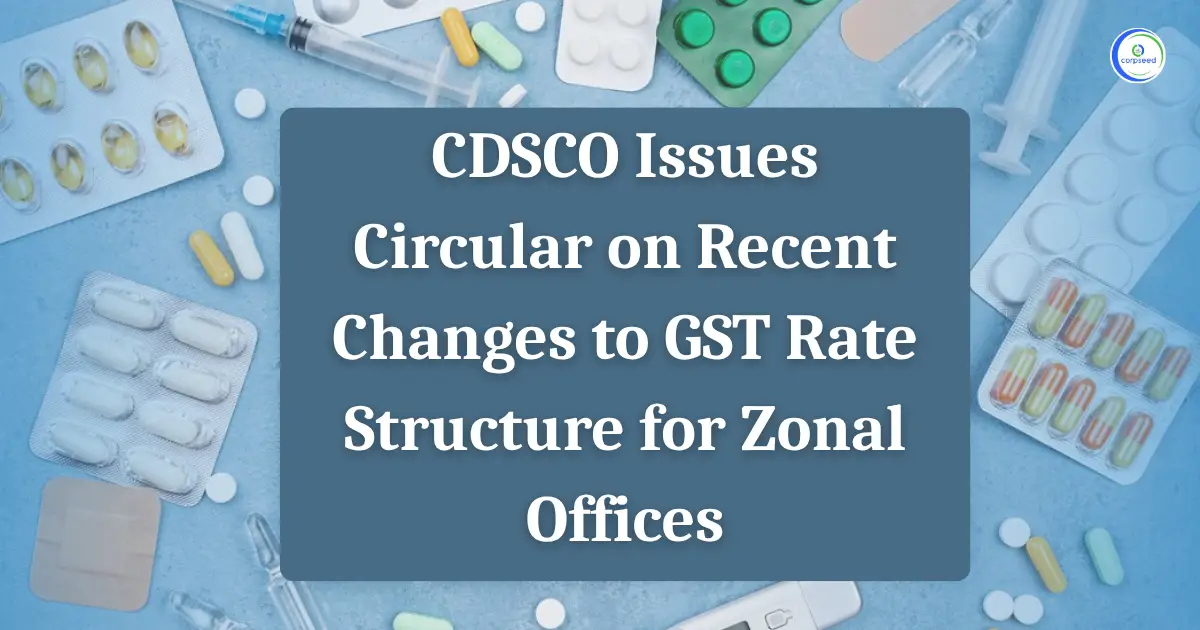A Brief Introduction to Ear, Nose, and Throat (ENT):
Any patient who faces any health problem with his head or neck then he will be get recommended to an otolaryngologist. Otolaryngology is the branch of medicine that an ENT treats. Your head and neck issues are diagnosed, managed, and treated by otolaryngologists. An ENT physician examines your larynx, sinuses, sinuses, ears, nose, and other relevant body parts. Otolaryngologists are medical professionals who complete a demanding program of specialty training after receiving their medical degree. Otolaryngology board certification is something that ENTs possess, and they regularly attend conferences and take additional medical courses to keep their licenses current.
Table of Contents
- A Brief Introduction of Ear, Nose, and Throat (ENT):
- What is a Medical Device?
- Types of Medical Devices in India
- Eligibility Criteria for Medical Devices Registration/Import
- Process & Fee for Medical Devices Registration
- Documents required to be attached
- Time Involved &Validity for Registration
- Re-registration or Renewal of the Registration Certificate
- Post-Compliances after Receiving Registration
- How to Register any new/additional Medical Device if Medical Device Registration Obtained Already?
--------------Blog Contact Form-------------
From the 1st of October 2022, the said medical devices having risk classes A and B will be covered under the licensing regime of CDSCO. Once the devices are under the scope of the licensing regime of CDSCO, all the importers and manufacturers of the said devices will have to apply for the license in order to sell their products in Indian Market.
The Ear, Nose, Throat (ENT) category consists of a total of 69 medical devices which are classified on the basis of their risk class and intended use. Out of which only class A and class B medical devices will fall under the licensing regime from 1 October 2022. The CDSCO listed medical devices are as below mentioned
| ENT | |||
| S. No. | Medical Device Name | Intented Use | INDIA |
| 1 | Adenotome | Surgical instrument intended to dissect the adenoids. | A |
| 2 | Adenotome blade | Intended to mount on adenotome and perform dissection of adenoids. | B |
| 3 | Anchored bone-conduction hearing implant system | Intended to treat hearing impairment due to middle and/or outer ear obstructive pathologies or types of conductive hearing loss. | C |
| 4 | Audiometer testing system | An assembly of electronic reference devices intended to calibrate an audiometer. | A |
| 5 | Audiometer | Intended for evaluation of hearing by generating tones throughout the audible range. | B |
| 6 | Otoscope | Intended for visual examination of the outer ear canal and tympanic membrane (eardrum) by direct viewing through the ear opening. | B |
| 7 | Auditory evoked-potential graphic recorder | Intended to record an electrical potential that originates in the auditory pathway of the brain in response to acoustic stimuli. | B |
| 8 | Auditory stimulator | Intended to apply sound stimuli to a patient's acoustic system. | C |
| 9 | Behind-the-ear air-conduction hearing aid | Intended to compensate for impaired hearing by transmitting amplified sound waves to the eardrum through air. | B |
| 10 | Behind-the-ear air-conduction tinnitus masker | Intended to provide noise of sufficient intensity and bandwidth to mask tinnitus. | B |
| 11 | Behind-the-ear bone-conduction tinnitus masker | Intended to provide ultrasonic broadband noise and/or sweep-frequency stimuli noise of sufficient intensity and bandwidth to mask tinnitus. | C |
| 12 | Cochlear implant assessment system | Intended to perform an integrity test on the implantable portion of a cochlear implant (CI) system in- situ. | C |
| 13 | Ear bowl | Constructed to fit the curvature of the head so that it will sit closely under the ear lobe and enable treatments of ear. | A |
| 14 | Ear canal impression tray | Intended to hold and confine the impression material in opposition to the surfaces to be recorded, and to control the impression material while it sets to form the impression of the ear canal. | A |
| 15 | Ear canal light | Intended to illuminate the ear canal. | A |
| 16 | Ear excavator | Designed for cutting, scraping, scooping and removing tissue during a surgical procedure in or around the ear. | A |
| 17 | Ear prosthesis | Intended to reconstruct the external ear by replacing damaged or missing tissue. | C |
| 18 | Ear wick | Intended to mimimize bleeding during ear surgery. | B |
| 19 | Electroglottograph | Intended for recording the changes in electrical potential or impedance, resulting from movement of the vocal cords during respiration and phonation. | B |
| 20 | Endaural curette | Designed for scraping within the ear canal (e.g., removing wax), and for procedures during middle ear surgery (e.g., removal of the superior bony rim). | A |
| 21 | ENT chair, electric | Designed to support a patient in a seated position, electrically control postion in a way to facilitate ear, nose, throat examination, treatment, and/or minor surgery. | B |
| 22 | ENT chair, mechanical | Designed to support a patient in a seated position, mechanically control postion in a way to facilitate ear, nose, throat examination, treatment, and/or minor surgery. | B |
| 23 | ENT shaver system | Intended to resect/debride soft and osseous (bone) tissue in the nasal cavity or ear region during ear/nose/throat (ENT) or plastic surgery procedures; including functional endoscopic sinus surgery (FESS). | B |
| 24 | ENT surgical microscope | Intended to magnify minute structures (e.g., nerves, vessels) in the performance of ear, nose, and/or throat (ENT) surgery requiring high magnification and adjustable focusing. | B |
| 25 | ENT transilluminator | Intended to illuminate sinus tissue during an ear/nose/throat (ENT) procedure to render the tissue translucent for examination | A |
| 26 | Evoked-potential audiometer | Electroacoustic instrument designed to evaluate the activity of the auditory pathway of the brain in response to an acoustic signal [auditory brainstem response (ABR)] in patients. | B |
| 27 | Flexible fibreoptic nasopharyngolaryngoscope | Flexible endoscope intended for the visual examination and treatment of the nasal passages, including the sinus openings, the pharyngeal end of the auditory tube, the larynx, and the vocal cords. | B |
| 28 | Flexible fibreoptic nasopharyngoscope | Flexible endoscope intended for the visual examination and treatment of nasopharynx (the upper part of the throat behind the nose). | B |
| 29 | Flexible fibreoptic rhinoscope | Flexible endoscope intended for the visual examination and treatment of nasalcavity. | B |
| 30 | Flexible fibreoptic sinoscope | Flexible endoscope intended for the visual examination and treatment of the paranasal sinuses during an ear/nose/throat (ENT) intervention. | B |
| 31 | Flexible video antroscope | Flexible endoscope intended for the visual examination and treatment of a cavity, particularly the pathological changes in the area of the maxillary sinus. | B |
| 32 | Impedance audiometer | Intended to evaluate the functional condition of the middle ear by changing the air pressure in the external auditory canal to measure and graph the mobility characteristics of the tympanic membrane. | B |
| 33 | Nasal septum straightening forceps | Surgical instrument specifically designed to straighten the nasal septum through grasping and manipulation of the bone/cartilage of the septum during nasal reconstructive procedures. | A |
| 34 | ENT Nasal snare | A hand-held manual surgical instrument intended to be inserted into the naris for the removal of tissue, typically polyps, tumours, and other abnormal tissue from the nasal cavity during ear/nose/throat (ENT) surgery. | B |
| 35 | Ossicular prosthesis, partial | Intended to be implanted for the functional reconstruction of segments of the ossicular chain (mallues, incus, and/or stapes bones). | C |
| 36 | Otoscope, endoscopic | Intended to be used in otology mainly for observation, diagnosis, and treatment of the outer and/or middle ear. | B |
| 37 | Tonsil knife | Intended for the removal of the tonsils during a surgical intervention. | A |
| 38 | Tracheal bistoury | Designed for opening abscesses or slitting up sinuses and/or fistulas in the trachea. | A |
| 39 | Middle ear mold | A middle ear mold is a preformed device that is intended to be implanted to reconstruct the middle ear cavity during repair of the tympanic membrane. | C |
| 40 | Fully-implantable middle ear implant system | An implanted assembly of sterile devices intended to compensate for impaired hearing by transmitting vibrations to the middle ear. It is powered by a battery that is recharged inductively, via an external device. | C |
| 41 | Larynx prosthesis | A device used for replacement and restoration of the laryngeal function, or for maintenance of patency of the larynx. | C |
| 42 | Ossicular prosthesis, total | A sterile device intended to be implanted for the total functional reconstruction of the ossicular chain (malleus, incus, and stapes bones) to facilitate the conduction of sound waves from the tympanic membrane to the inner ea to treat conductive hearing loss from traumatic or surgical injury, otosclerosis, congenital fixation of the stapes, or chronic middle ear disease. | C |
| 43 | Otoscope, direct | Inteded for examination of the outer ear canal and tympanic membrane (eardrum) by direct viewing through the ear opening. | B |
| 44 | Soft-tissue surgical forceps, alligator | A long, thin, hand-held manual surgical instrument designed to facilitate grasping and manipulation of soft-tissues/anatomical structures [typically during ear/nose/throat (ENT) surgery]. | B |
| 45 | Epistaxis balloon | Device intended to control internal nasal bleeding by exerting pressure against the sphenopalatine artery. | B |
| 46 | Eustachian tube balloon dilation system | The system is intended for use in dilating the cartilaginous portion of the Eustachian tube for treating persistent Eustachian tube dysfunction. | B |
| 47 | Ear, nose, and throat electric or pneumatic surgical drill | An ear, nose, and throat electric or pneumatic surgical drill is a rotating drilling device, including the handpiece, that is intended to drive various accessories, such as an ear, nose, and throat bur , for the controlled incision or removal of bone in the ear, nose, and throat area. | C |
| 48 | Argon laser for otology, rhinology, and laryngology | Device is used for the purpose of coagulating and vaporizing soft and fibrous tissues, including osseous tissue while performing ENT surgical procedure. | C |
| 49 | Ear, nose, and throat microsurgical carbon dioxide laser | Device intended for the surgical excision of tissue from the ear, nose, and throat area while performing microsurgical procedures to excise lesions and tumors of the vocal cords and adjacent areas. | C |
| 50 | Esophagoscope (flexible or rigid) | Device intended to examine or treat esophageal malfunction symptoms, esophageal or mediastinal disease, or to remove foreign bodies from the esophagus. | B |
| 51 | Mediastinoscope and accessories | Device intended to examine or treat tissue in the area separating the lungs for diagnosis of tumors and lesions and to determine whether excision of certain organs or tissues is indicated. | B |
| 52 | Laryngostroboscope | A laryngostroboscope is a device that is intended to allow observation of glottic action during phonation. | B |
| 53 | Bone particle collector | A bone particle collector is a filtering device intended to be inserted into a suction tube during the early stages of otologic surgery to collect bone particles for future use. | A |
| 54 | Suction antichoke device | A suction antichoke device is a device intended to be used in an emergency situation to remove, by the application of suction, foreign objects that obstruct a patient's airway to prevent asphyxiation to the patient. | C |
| 55 | Tongs antichoke device | A tongs antichoke device is a device that is intended to be used in an emergency situation to grasp and remove foreign objects that obstruct a patient's airway to prevent asphyxiation of the patient. | C |
| 56 | Powered nasal irrigator | A powered nasal irrigator is an AC-powered device intended to wash the nasal cavity by means of a pressure-controlled pulsating stream of water. | B |
| 57 | External nasal splint | An external nasal splint is a rigid or partially rigid device intended for use externally for the immobilization of parts of the nose. | A |
| 58 | Antistammering device | An antistammering device intended to minimize a user's involuntary hesitative or repetitive speech. | B |
| 59 | External upper esophageal sphincter compression device | An external upper esophageal sphincter compression device is intended to apply external pressure on the cricoid cartilage for the purpose of reducing the symptoms of laryngopharyngeal reflux disease. | C |
| 60 | Wireless air-conduction hearing aid | A wireless air-conduction hearing aid is intended to compensate for impaired hearing that incorporates wireless technology in its programming or use. | B |
| 61 | Hearing aid calibrator and analysis system | A hearing aid calibrator and analysis system is an electronic reference device intended to calibrate and assess the electroacoustic frequency and sound intensity characteristics emanating from a hearing aid, master hearing aid, group hearing aid or group auditory trainer. | B |
| 62 | Tympanic membrane contact hearing aid | A tympanic membrane contact hearing aid is a prescription device that compensates for impaired hearing by vibrating the tympanic membrane through a transducer that is in direct contact with the tympanic membrane. | D |
| 63 | Master hearing aid | A master hearing aid is an electronic device intended to simulate a hearing aid during audiometric testing. | B |
| 64 | Active implantable bone conduction hearing system | The active implantable bone conduction hearing system is intended to compensate for conductive or mixed hearing losses by conveying amplified acoustic signals to the cochlea via mechanical vibrations on the skull bone. | C |
| 65 | Battery-powered artificial larynx | A battery-powered artificial larynx is an externally applied device intended for use in the absence of the larynx to produce sound. | B |
| 66 | Partial ossicular replacement prosthesis | A partial ossicular replacement prosthesis is a device intended to be implanted for the functional reconstruction of segments of the ossicular chain and facilitates the conduction of sound wave from the tympanic membrane to the inner ear. | C |
| 67 | Total ossicular replacement prosthesis | A total ossicular replacement prosthesis is a device intended to be implanted for the total functional reconstruction of the ossicular chain and facilitates the conduction of sound waves from the tympanic membrance to the inner ear. | C |
| 68 | Mandibular implant facial prosthesis | A mandibular implant facial prosthesis is a device that is intended to be implanted for use in the functional reconstruction of mandibular deficits. | C |
| 68 | Sacculotomy tack (Cody tack) | A sacculotomy tack (Cody tack) is a device that consists of a pointed stainless steel tack intended to be implanted to relieve the symptoms of vertigo. | C |
| 70 | Nasal dilator | A nasal dilator is a device intended to provide temporary relief from transient causes of breathing difficulties resulting from structural abnormalities and/or transient causes of nasal congestion associated with reduced nasal airflow. | B |
| 71 | Tympanostomy tube with semipermeable membrane | A tympanostomy tube with a semipermeable membrane is a device intended to be implanted for ventilation or drainage of the middle ear and for preventing fluids from entering the middle ear cavity. | C |
| 72 | Transcutaneous air conduction hearing aid system | A transcutaneous air conduction hearing aid system is a wearable sound-amplifying device intended to compensate for impaired hearing without occluding the ear canal. | C |
| 73 | Acoustic chamber for audiometric testing | An acoustic chamber for audiometric testing is a room that is intended for use in conducting diagnostic hearing evaluations and that eliminates sound reflections and provides isolation from outside sounds. | A |
| 74 | Gustometer | A gustometer is a battery-powered device that consists of two electrodes that are intended to provide galvanic stimulus resulting in taste sensation. | C |
| 75 | ENT cupped forceps | A forcep with a spoon-(dish) like configuration at the distal end, and is used to treat the ear, nose, and throat (ENT), and remove tissue from the body. | A |
| 76 | Tongue depressor | A surgical instrument used to move the tongue to facilitate examination of surrounding organs and tissue. | A |
| 77 | Tracheal dilator | Intended to dilate the tracheal structure and tracheal passageway. | A |
| 78 | Tonsillectome | A manually operated surgical device used to dissect the tonsils. | A |
Central Drugs Standard Control Organisation:
India is growing as one of the nation's leading pharmaceutical businesses and is among the top ten nations in terms of the pharmaceutical industry. Several factors such as a large population, growing health awareness, affordable medical facilities, and better research facilities have given rise to the manufacturing and development of pharma business in India. However, with the increasing scope for the growth of the pharma industry in India, there are possibilities for the sale/purchase of medical equipment & device illegally or without jurisdiction. Therefore, the Government of India has established the Central Drug Standards Control Organization (CDSCO), which is the primary legislative body and has been responsible for the regulation, control, and management of pharmaceuticals and medical devices in India apart from the appointment of the Drug Controller General of India (DCGI), and has conferred the responsibility of undertaking assessment, approval and regulation of further compliances(import, export, sale, distribution) in the matters of medicinal drugs and medical devices(including any existing or any new) drugs/devices in accordance with the provisions of the Drugs and Cosmetics Act 1940.

What is a Medical Device?
According to the latest definition as provided under the Medical Devices Amendment rules 2020, as notified on 11.02.2020. However, taking care of circumstances the government has exercised its powers to include more categories by widening the scope of the definition of “Medical Device” under the Act. It states-
"Devices used in general medical practice such as medical apparatus, instruments, implants appliance, etc., which are either used individually or in combination, and are intended to be specifically applied for human beings or animals and are further intended to obtain the desired function by such means and for such purposes as provided below, but is not intended to meet the primary intended action on human body or animals by any pharmacological or immunological or metabolic means-
- Analysis, prevention, observing, treatment, or mitigation of any disease or disorder;
- Analysis, observing, treatment, mitigation, or support for any injury or disability;
- Examination, replacement or alteration, or support in findings of the anatomy or a physiological process;
- For supporting or sustaining life;
- Decontamination of medical devices; and
- Conception-related equipment & devices.
Therefore, every manufacturer or importer or both of any medical devices in India shall be required to obtain registration as per the provisions of the Drugs and Cosmetics Act 1940. Any failure to comply with the same may invite legal action including penalty & prosecution under the Act.
Types of Medical Devices in India
Provisions related to the import, manufacture, sale & distribution of medical devices are regulated under the provisions of the drug and cosmetics Act 1945. Under the New Medical Rules 2017, all medical devices have been classified into four different categories depending on their usability & risk involved as provided below.
- Class A:- Low-risk devices like a thermometer, tongue depressors, etc.
- Class B:- Low moderate risk like Hypodermic Needles, suction equipment, etc.
- Class C:- Moderate high-risk devices like Lung ventilators, etc.
- Class D:- High-risk devices like Heart valves, implantable devices, etc.
Where Class A & B devices are considered to be less risky and moderate devices, for which the application to manufacture has to be filed to the State Licensing Authority. Whereas Class C &D are considered to be high and very High-risk devices and the application for these has to be filed to the Central Licensing Authority of India.
Eligibility Criteria for Medical Devices Registration/Import
The provisions related to activities such as Import, manufacture, sale and distribution of medical devices have been regulated under the provisions of the Drugs & Cosmetic Act 1940 & Rules 1945. Therefore, any person/firm/enterprise, etc. holding a wholesale drug license and/or manufacturing license issued under the Drugs and Cosmetics Act, 1940 and Rules 1945 could make an application for Registration and import of medical devices into India.
Process & Fee for Medical Devices Registration
Types of Medical Devices Registration
- Registration/Import of any existing medical device;
- Registration /import of any new medical device
Step 1: Determine whether your medical device is under notified list or not
The CDSCO authority has provided a list of notified medical devices that need to compulsorily obtain registration under the Drugs and Cosmetics Act 1940 and in accordance with Medical devices rules 2017. However, there may be any medical devices that have not been expressly notified by the CDSCO authority, or in the case of new medical equipment, the manufacturer/importer shall be required to obtain a NOC in such cases. For instance, Blood Grouping Sera Ligatures, Sutures, Staples Intra-Uterine Devices (Cu-T), Condoms, Tubal Rings, Surgical Dressing, Umbilical Tapes, Blood / Blood Component Bags do not need registration, whereas devices such as spinal needles, cochlear implants, syringes, and needles, heart valves, endotracheal tubes and catheters among others should undergo registration provides with the CDSCO.
Step 2: Appoint an Authorized representative (in case of a Foreign Entity)
For a foreign business manufacturer entity, it shall be necessary to appoint an authorized business entity in India, who shall be the contact person for the inspection authorities during the process, assist in device approvals, registrations process, and vigilance adverse event reporting. The Indian Authorization should hold a wholesale drug license in forms 20B& 21B.
Step 3: Fill out the application form for Medical Device Registration
In the next step, the manufacturer/importer for MD shall be required to submit the registration form of a regulatory dossier, along with all the prescribed documents along with the prescribed fee on the CDSCO portal to the DGCI (Drugs Controller General of India) by logging on to the online CDSCO portal https://cdsco.gov.in/opencms/opencms/en/Home/ and signing into the portal.
Following forms along with applicable govt. fees have been provided below, which shall be required to be paid through payment challan-
| Applicant Type | Class of MD | Application Form | License Form |
| Importer | A,B,C,D | MD-14 | MD-15 |
| Manufacturer | A B | MD-3 | MD-5 |
| Manufacturer(Loan License) | A B | MD-4 | MD-6 |
| Manufacturer | C, D | MD-7 | MD-9 |
| Manufacturer(Loan License) | C, D | MD-8 | MD-10 |
However, in the case of new equipment or medical device-
| Application Type | Class of MD | Application Form | License Form |
| Importer Clinical Investigation | A,B,C,D | MD-22 | MD-23 |
| Import License | A,B,C,D | MD-26 | MD-27 |
| Test License(for importer) | A,B,C,D | MD-16 | MD-17 |
| Manufacturer (Clinical investigation) | A,B,C,D | MD-22 | MD-23 |
| Manufacturer License | A,B,C,D | MD-26 | MD-27 |
| Test License | A,B,C,D | MD-16 | MD-17 |
Further, each application shall be supported with the list of documents and the requisite fee as provided in the online portal of CDSCO-
| Type of License | Class of Device | Applicable Regulation | Govt. Fee |
|
For Manufacturing/Loan License
|
A or B; | 20(2) | Rs. 5000 Rs. 500 |
|
For Manufacturing/Loan License
|
C or D; | 21(2) | Rs. 50,000 Rs. 500 |
|
For Import License(other than IVD)
|
Class A | 34(2) | 1000 Dollar 50 Dollar |
|
Import License(other than IVD)
|
Class B | 34(2) | 2000 Dollar 1000 Dollar |
|
Import License (in IVD)
|
Class A or B | 34(2) | Rs. 1000 Rs. 10 |
|
Import License (other than IVD)
|
Class C or D | 34(2) | 3000 Dollar 1500 Dollar |
|
Import License(in IVD)
|
C or D | 34(2) | 3000 Dollar 500 Dollar |
Step 4: Obtain a Certificate of Registration in the Prescribed form
Once the application is submitted on the CDSCO portal, the DGCI registration authority may send a query through an inquiry letter to the manufacturer or from the authorized representative of the importer, along with the timeline within which the query should be answered, and sometimes, may also ask for a technical presentation On satisfaction the authority may issue a license in such form as provided in the above list. After obtaining registration, the manufacturer or his authorized representative may apply for an importer license.
Documents required to be attached
- Form 40
- ISO 13485 certificate
- Full Quality Assurance Certificate
- CE Design Certificate
- Undertaking that all information provided is authentic
- Either a Free Sale Certificate or Certificate from the Foreign Government
- Certificate of Marketability from GHTF (Australia, Canada, Japan, the European Union, and the United States);
- Plant Master Report
- Device Master File
Time Involved &Validity for Registration
If the DGCI doesn’t ask for a Technical Presentation or Subject Expert Committee (SEC) audit, it takes around 6-9 months to obtain a Medical Devices Registration. In cases where Technical Presentation or Subject Expert Committee (SEC) audit, is required, it may take additional 3-6 months.
Once obtained the Registration Certificate shall be valid for a total period of 3 years from the date of issue of registration unless suspended or canceled by the DGCI authority for proper causes.
Re-registration or Renewal of the Registration Certificate
The application for renewal of the MD registration certificate shall be made at least nine months from the expiry of the registration certificate. Though there are no additional requirements for the renewal of registration, it shall be necessary for the certificate holder to provide a copy of the Plant Master File (PMF) and Device Master File (DMF), where there are no changes in the PMF and DMF,
Post-Compliances after Receiving Registration
Though there are not many compliances in place about the registration certificate, it shall be compulsory for the certificate holder to-
- In case of any change that has taken place about the constitution of the firm and/or address of the registered office/factory premises, the MD manufacturer/authorized representative of the importer to intimate the licensing authority regarding the same in writing;
- In case any such change has taken place, the existing registration certificate shall be valid for a maximum period of three months from the date on which the change has taken place, and during this time, the manufacturer/authorized representative shall be required to obtain a fresh Registration Certificate;
How to Register any new/additional Medical Device if Medical Device Registration Obtained Already?
In case an importer wants to obtain registration for manufacturing of any additional manufacturing device, then such person shall be required to obtain an endorsement to the existing Registration Certificate along with the prescribed documents holding that manufacturing of an additional device is being undertaken in the manufacturing site as provided in the registration certificate along with a fee of 1000 dollars fee for each additional device.
This portion of the site is for informational purposes only. The content is not legal advice. The statements and opinions are the expression of author, not corpseed, and have not been evaluated by corpseed for accuracy, completeness, or changes in the law.
BOOK A FREE CONSULTATION
Get help from an experienced legal adviser. Schedule your consultation at a time that works for you and it's absolutely FREE.




